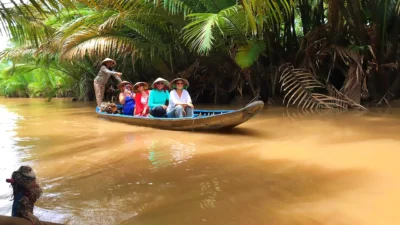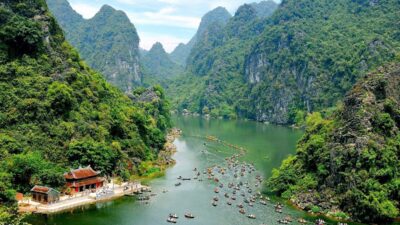Located in the mist-shrouded mountains of Lào Cai Province, Sapa is a place of dramatic beauty and deep cultural heritage. Known for its terraced rice fields, towering peaks, and vibrant ethnic minority communities, Sapa has become the top destination for trekking in Vietnam.
Sapa trekking tours offer much more than scenic hikes. They are immersive journeys into the lives of the H’mong, Dao, Tay, and other indigenous people who have lived in the region for centuries. Whether you’re a seasoned hiker or a curious traveler, trekking in Sapa will take you beyond the usual tourist trail into a world of authenticity and awe.
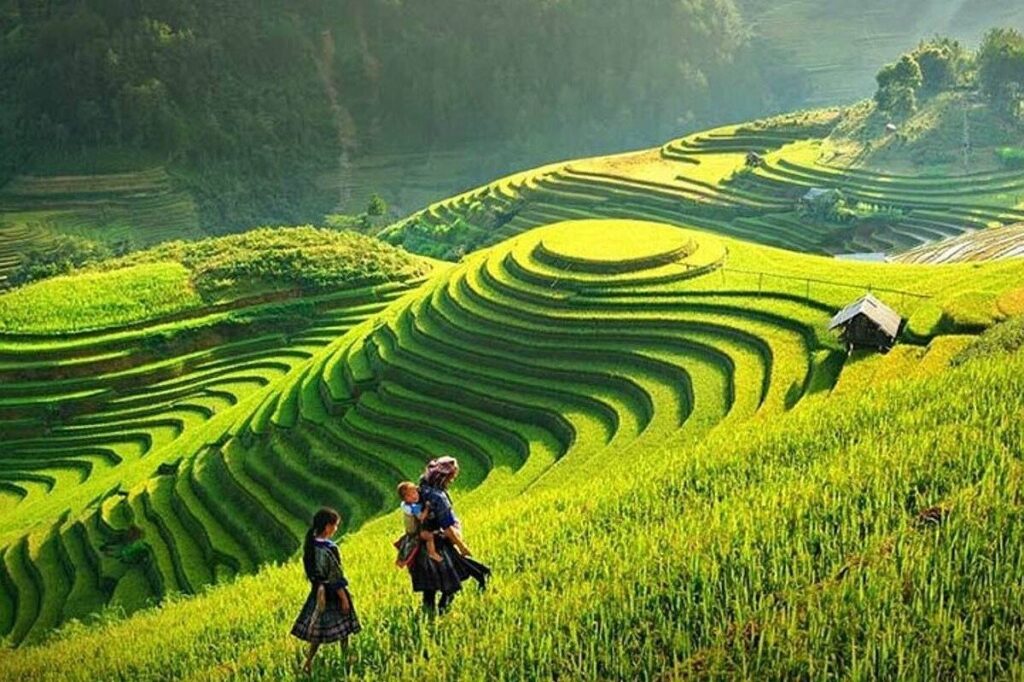
1. What Are Sapa Trekking Tours?
Sapa trekking tours are guided or self-guided walking tours through the mountain trails and ethnic villages in and around the town of Sapa. These tours are designed to showcase the natural beauty and rich culture of the region, with itineraries ranging from a few hours to several days.
A typical tour will involve hiking through valleys, rice paddies, waterfalls, and forests, while visiting villages of the Black H’mong, Red Dao, and other ethnic groups. Most longer tours include overnight stays in family-run homestays.
Why it’s unique: Nowhere else in Vietnam offers the same combination of landscapes, culture, and adventure as Sapa trekking tours.
2. Best Trekking Routes in Sapa
a. Cat Cat Village Trek (Easy – Half Day)
Only 3 km from Sapa town, Cat Cat is ideal for beginners. This short walk takes you past waterfalls, local handicraft stalls, and beautiful terraced hills.
Highlights:
- Traditional water-powered mills
- H’mong culture on display
- Easy return route
b. Lao Chai – Ta Van – Giang Ta Chai (Moderate – Full Day)
This is the classic Sapa trekking route, suitable for most fitness levels. The route begins in Lao Chai (Black H’mong village), passes through Ta Van (Giay village), and ends at Giang Ta Chai (Red Dao village).
Highlights:
- Incredible rice terrace views
- Bamboo forests and river crossings
- Authentic local interaction
c. Sapa – Ban Ho – Thanh Phu – Nam Toong (Challenging – 2 Days)
For those wanting more adventure, this extended trek covers remote areas in Muong Hoa Valley. Less touristy, more rewarding.
Highlights:
- Overnight homestays
- Fewer tourists
- Rich biodiversity
d. Mount Fansipan Ascent (Difficult – 2–3 Days)
Mount Fansipan, also known as “the Roof of Indochina,” is Vietnam’s highest peak at 3,143 meters. Trekking to the summit is physically demanding but incredibly rewarding.
Highlights:
- Dense forest trails
- Panoramic summit views
- A real achievement for hikers
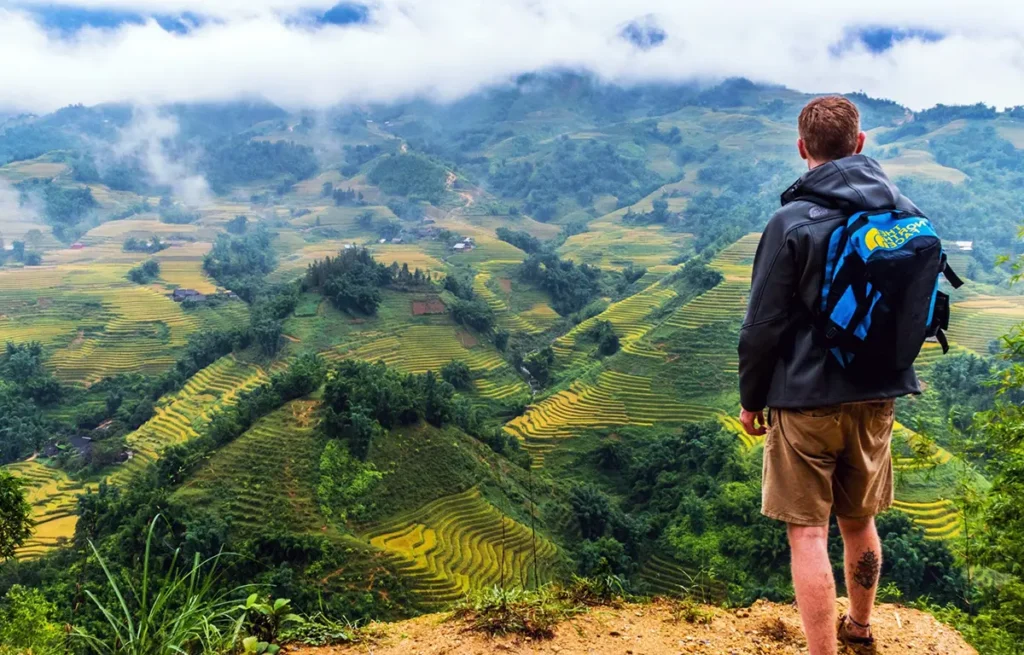
3. When to Take Sapa Trekking Tours
Best Seasons:
- March to May (Spring): Blooming flowers, warm weather
- September to November (Autumn): Golden rice fields, crisp air
Off-Peak Seasons:
- June to August: Rainy season—lush landscapes but muddy trails
- December to February: Cold and foggy—can snow at higher elevations
Pro Tip: Check weather reports and trail conditions before booking long treks, especially during the rainy season.
4. Cultural Encounters Along the Way
What sets Sapa trekking tours apart is the opportunity to interact with Vietnam’s ethnic minority groups. These communities live much as they have for generations, preserving language, clothing, and traditions.
Ethnic Groups You’ll Meet:
- Black H’mong: Skilled in batik and indigo dyeing, known for black clothes and silver jewelry.
- Red Dao: Famous for herbal medicine and elaborate red headscarves.
- Tay and Giay: Rice farmers and builders of traditional stilt houses.
Visitors are often invited into homes, offered tea, or included in cooking sessions, turning a trek into a cultural exchange.
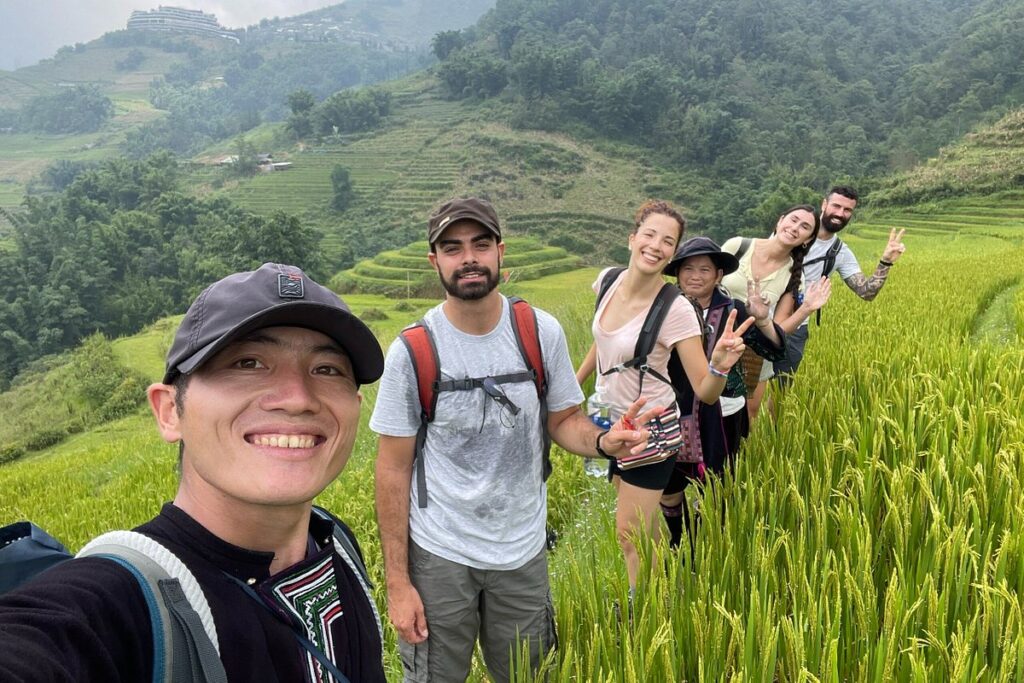
5. What’s Included in a Sapa Trekking Tour?
While tour inclusions vary, most reputable providers offer:
- English-speaking local guide
- Meals (usually home-cooked)
- Water and snacks
- Entrance fees to ethnic villages
- Homestay or guesthouse accommodation
- Transportation (if starting outside Sapa town)
More premium packages might include hotel pickups from Hanoi, private guides, or luggage porters.
6. Homestays: The Soul of Sapa Trekking
Staying in a village homestay is often the highlight of a Sapa trekking tour. These family-run accommodations give visitors a chance to experience life like a local.
What to Expect:
- Shared sleeping quarters (sometimes with mosquito nets)
- Basic but clean facilities
- Home-cooked meals using local ingredients
- Warm hospitality and storytelling by the fireplace
Homestays are not just places to sleep—they’re cultural exchanges that deepen your understanding of life in the highlands.
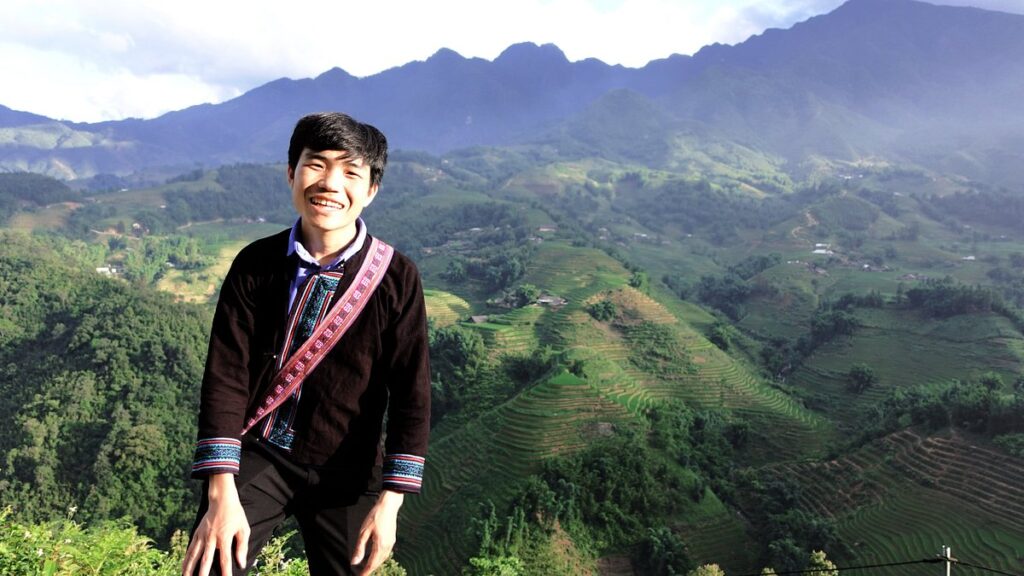
7. What to Pack for a Trek in Sapa
Packing right can make or break your trekking experience. Here’s what you should bring:
Essentials:
- Durable hiking boots
- Lightweight, breathable clothes
- Rain jacket (especially May–September)
- Sunscreen, insect repellent, and hat
- Water bottle (refillable)
- Basic toiletries and quick-dry towel
- Small backpack for daily essentials
For multi-day treks, pack light and bring:
- Flashlight/headlamp
- Extra socks and underwear
- Power bank for devices
- Sleeping bag liner (optional but nice in colder months)
8. How to Get to Sapa
From Hanoi:
- By Bus: 6–7 hours via highway; sleeper and limousine buses available
- By Train: Overnight train to Lao Cai, then 1-hour bus to Sapa
- By Car: Private transfers take around 5–6 hours
Pro Tip: Book Sapa trekking tours that include transportation for a smoother experience.
9. Budget Guide: How Much Do Sapa Trekking Tours Cost?
Prices vary by duration, group size, and service quality:
- Half-day trek: $15–$30 USD/person
- Full-day trek: $25–$50 USD/person
- 2-day, 1-night tour: $60–$100 USD/person (includes meals and accommodation)
- 3-day or Fansipan tours: $100–$200+ USD/person
Group tours are cheaper, but private tours offer a more personalized experience.
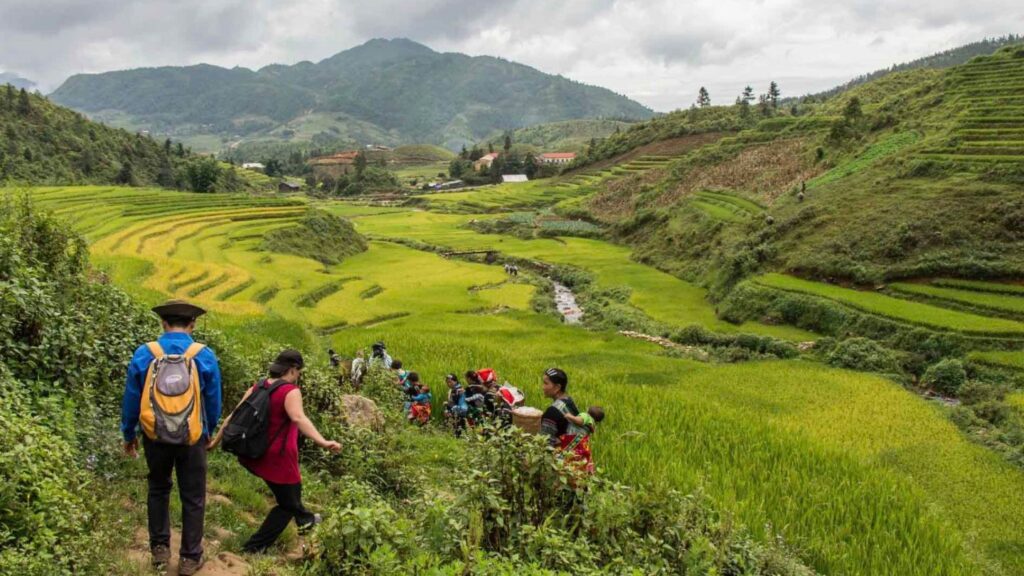
10. Booking Tips for the Best Trekking Experience
- Choose local guides for genuine insight and to support the community.
- Book directly or through ethical travel agencies to avoid overpricing.
- Read recent reviews and look for transparency in tour descriptions.
- Confirm what’s included—especially meals, transport, and permits.
- Ask about weather, fitness level requirements, and cancellation policies.
11. Safety and Trekking Etiquette
- Always stay with your group or guide.
- Respect village customs—ask before entering homes or taking photos.
- Don’t litter or leave behind plastic bottles.
- Avoid giving money or sweets to children—it promotes unhealthy habits.
- Stay hydrated and don’t underestimate elevation-related fatigue.
12. Sustainable Travel and Supporting Local Communities
Your trekking adventure can contribute to preserving Sapa’s cultural and environmental heritage.
Responsible Travel Tips:
- Stay in eco-certified homestays or lodges
- Use reusable water bottles
- Avoid unethical animal tourism
- Buy crafts directly from artisans
By traveling mindfully, you help sustain the very experiences that make Sapa trekking tours so meaningful.
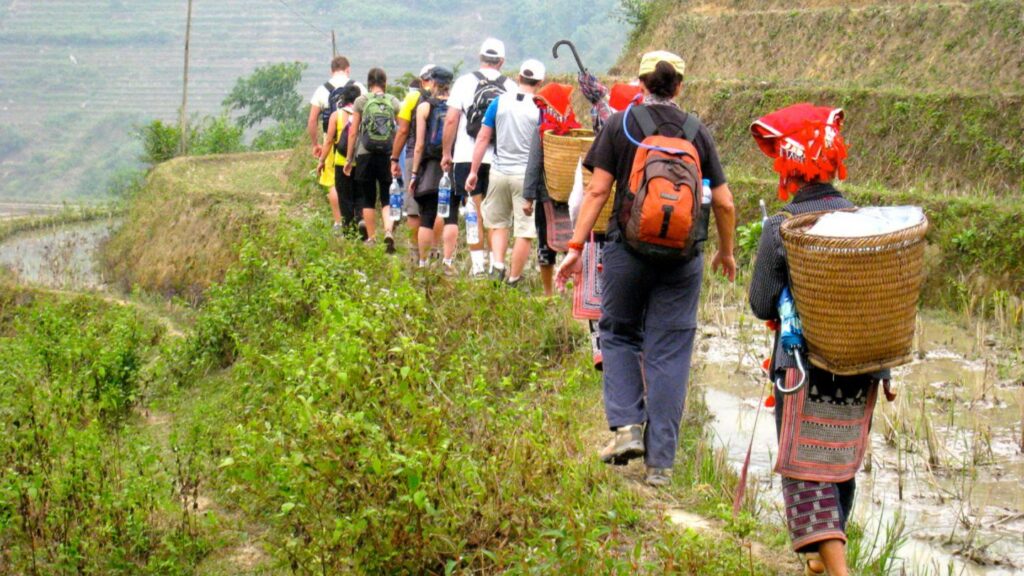
Begin Your Journey into the Heart of Vietnam
Sapa trekking tours are not just about reaching destinations—they’re about forging connections, challenging your limits, and walking through landscapes that stir the soul. From lush rice terraces to misty mountain passes, every step is a chapter in your travel story.
Whether you’re watching the sunrise from Mount Fansipan, sharing rice wine with a Red Dao family, or simply walking through fields of gold, Sapa will leave footprints not just on your boots—but on your heart.
Contact with Vietnam Tour to take a trip!
See more post: The Ultimate Ha Long Bay Cruise Guide: Everything You Need to Know


